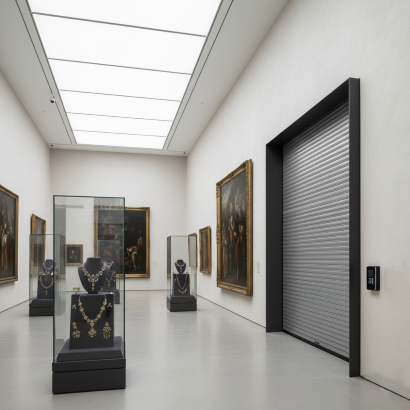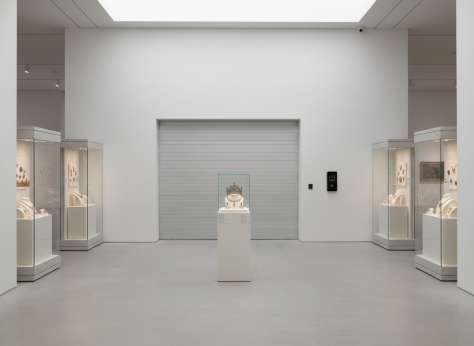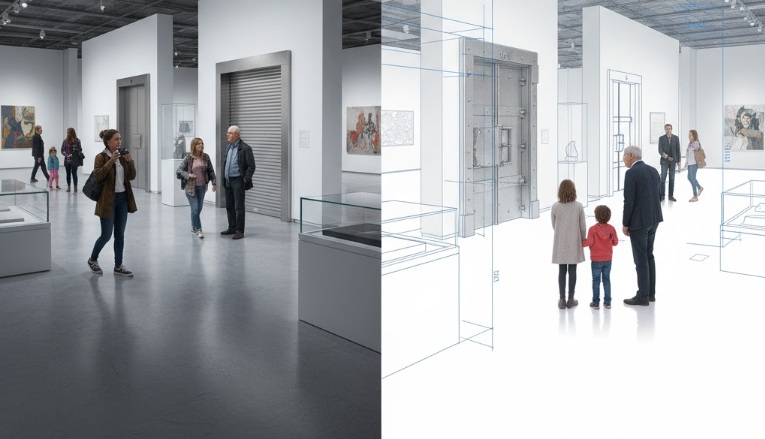In the world of heritage protection, automatic doors for museums play a crucial role. They not only facilitate visitor access and movement but also actively contribute to the preservation of pieces and the overall safety of the venue. Imagine an environment where each opening and closing is silent, precise, and controlled, enhancing the visitor experience while ensuring the protection of invaluable works.
Key Advantages: Beyond Easy Access
It’s important to note that automatic doors in museums are not limited to convenience. Their design allows for temperature and humidity control, essential factors for the preservation of art and historical documents. Additionally, their silent operation avoids vibrations and noise that could affect delicate pieces. In terms of energy efficiency, these doors minimize climate control losses, optimizing consumption and reducing operational costs.
Advanced Security: Automatic Doors for Museums
When it comes to protecting a museum, physical security is just as important as preservation. Automatic doors can be integrated with access control systems, alarms, and video surveillance, but it is also essential that they comply with specific regulations. For example, resistance to forced entry and bullet resistance are requirements in museums with high-value pieces. At CBX Security, we offer armored doors and high-security roller shutters that meet the RC4/EN1522 standards, providing a robust barrier against intrusion attempts or ballistic attacks.
Practical Examples:
In practice, many museums have opted to combine bullet-resistant automatic glass doors with high-security roller shutters to protect main accesses and restricted areas. This solution allows for a smooth transition between welcoming the visitor and protection outside opening hours. Additionally, integration with bullet-resistant glass doors ensures transparency and visibility without sacrificing security.

Considerations for Choosing the Ideal Automatic Door
Selecting the right automatic door involves analyzing visitor flow, risk level, and the architectural features of the museum. It’s advisable to opt for models that allow integration with existing security systems and that offer recognized certifications. You might also consider installing armored doors in restricted access areas or storage rooms for pieces, thus reinforcing overall protection of the venue.
Conclusion: Elevate Your Museum’s Security and Efficiency
In summary, automatic doors for museums represent a strategic investment in security, efficiency, and preservation. Their proper selection and integration can make the difference between basic protection and robust defense against real threats. If you seek personalized advice on high-security solutions for your museum, contact us or call +34 928 18 35 96. Our team will help you navigate the complex world of museum security.

